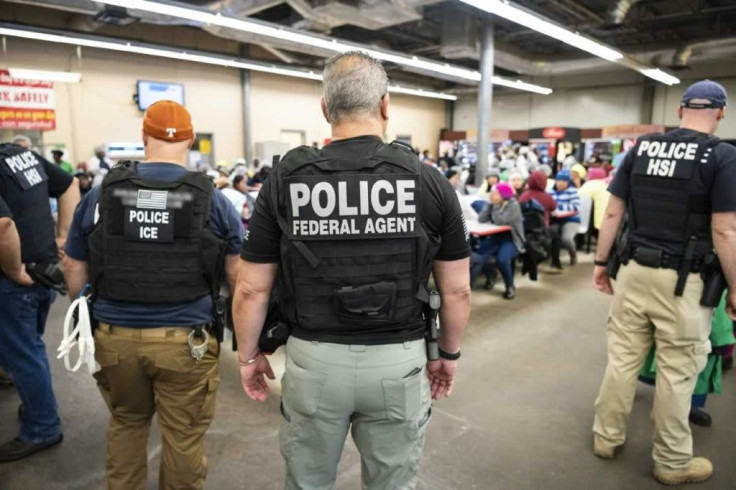Trump On Immigration: White House To Increase Restrictions On Guest Worker Programs

KEY POINTS
- Immigration to the U.S. topped 1 million in 2016 but fell below the mark by 2018
- President Trump is determined to limit the number of aliens -- both legal and undocumented -- from entering the U.S.
- Most Americans favor developing a path to legal status for undocumented immigrants
Updated 4 p.m. EDT
President Trump on Monday signed an executive order limiting foreign work visas as part of his campaign to reduce immigration. Trump said the action was necessary to protect U.S. workers from steep job losses as the economy attempts to climb out of the coronavirus recession.
The order freezes work visas in technology, landscaping, forestry and other areas but excludes agricultural laborers, healthcare works and about 20,000 child care providers, the Washington Post reported. The action affects about 525,000 jobs.
The order was not immediately posted on the White House website.
Grant Thornton chief economist Diane Swonk said the action will undermine U.S. competitiveness and hurt universities that depend on foreign students to subsidize tuition costs for domestic students.
This will further undermine U.S. competitiveness as we turn away the best and brightest. Also, hits schools who rely on foreign student to subsidize tuition costs for the domestic students. Irony is we have bigger uptick in hospitalizations. https://t.co/L7dFWBdTvw
— Diane Swonk (@DianeSwonk) June 22, 2020
"Companies throughout the U.S., of all different sizes, depend on foreign-born workers to drive innovation and growth, as well to perform crucial work for which there are labor shortages in this country,” immigration attorney Devin Connolly of Reeves Law Group said in an email to International Business Times. "Suspending these programs will cause legitimate hiring concerns for a lot of companies.”
Original story
President Trump on Monday was poised to sign an executive order imposing further restrictions on immigration on top of previous actions that cut legal immigration drastically and slashed grants of asylum. The new order is expected to focus on guest worker programs.
Trump has said pausing immigration will help Americans find jobs as the nation attempts to recover economically from the coronavirus pandemic. But the president long has displayed anti-immigration leanings, starting his campaign by accusing immigrating Mexicans of being rapists and drug dealers and, once elected, demanding billions of dollars to build a concrete and steel wall along the border with Mexico to block undocumented immigrants from crossing.
Trump has attempted to end the Deferred Action on Childhood Arrivals – DACA – program for people who were brought to the United States as children. He was blocked last week by the U.S. Supreme Court, which said his administration violated procedure in the way it attempted to eliminate deportation protections for so-called Dreamers. Trump then pledged to try again.
The coming order was expected to target H-1B, H-2B, L-1 and J-1 visas through the end of the year, Fox News reported.
The U.S. Chamber of Commerce has warned against restricting immigration too tightly.
“As the economy rebounds, American businesses will need assurances that they can meet all their workforce needs. To that end, it is crucial that they have access to talent both domestically and from around the world,” chamber CEO Thomas Donohue said in a letter to Trump, adding that limiting access to foreign talent would undermine the recovery.
Legal immigration was more than 11% lower before the coronavirus pandemic hit. In 2018, legal immigration fell to 940,877 from a record 1.06 million in 2016. Last year, Trump unveiled a sweeping rule aimed at cutting immigration by half, blocking those who don’t meet certain income standards and denying green cards to those who received public assistance. Asylum grants were further restricted earlier this month with the implementation of a rule increasing the amount of proof needed to qualify.
Dan Tichenor, an immigration historian at the University of Oregon told NPR immigration restrictions become popular in times of crisis, and policies instituted during the 1918 Spanish flu pandemic imposed draconian restrictions that extended into 1965.
A Pew Research Center poll earlier this month indicated 75% of those queried favor giving permanent legal status to Dreamers and a like proportion favor developing a pathway to legal status for all undocumented immigrants.
© Copyright IBTimes 2025. All rights reserved.






















